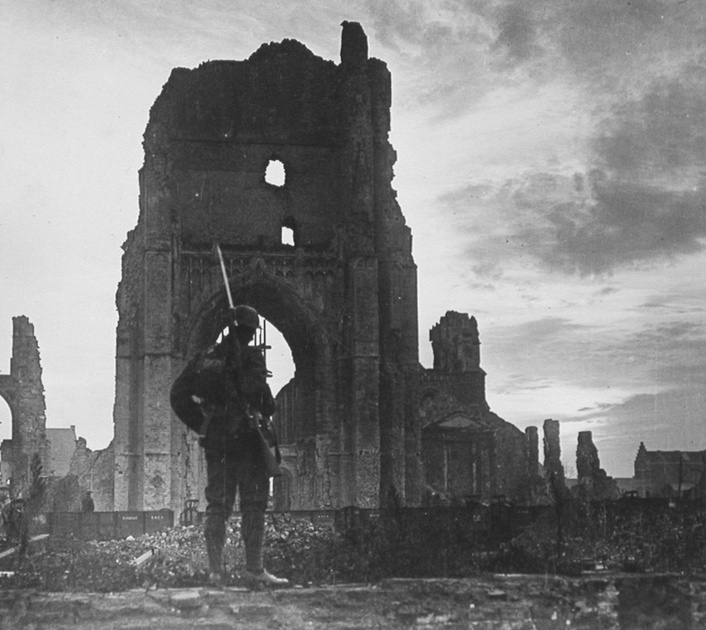Of all the sci fi subgenres we’ve talked about here on Signals from the Edge, dieselpunk has to be one of the most fascinating.
It’s what many might call an in-between genre, seeing as how it falls right in the middle of steampunk and cyberpunk.
Where steampunk has a focus on Victorian and early industrialism technology, and cyberpunk is in a world of technological degradation and societal collapse, dieselpunk revels in the in-between space of prosperity and unrivaled growth.
What Is Dieselpunk?
The term Dieselpunk was first used in 2001 by game designer Lewis Pollack, who was describing his tabletop RPG game, Children of the Sun.
The aesthetics of dieselpunk were closely tied to those of steampunk, so many people that were fascinated with the era largely used that term.
However, as time went on, it became clear that the aesthetics and ideas of this sci fi subgenre were distinctly different from steampunk.
To summarize, Dieselpunk describes the time between World War I and the early 1950s. Historically, this period was filled with unprecedented economic failure, but it was also a time of surprising technological advancement, specifically with the development of diesel-powered vehicles.
Much of this technology can be accredited to the build-up to WWII, but dieselpunk takes these designs and ideas and puts a modern spin on them. Dieselpunk is also influenced heavily by jazz music and the Art Deco era.
Dieselpunk Derivatives
There are certain deviations on a theme within the Dieselpunk genre, and they are largely opposites.
The first distinction is what’s known as Ottensian dieselpunk, based of the ideas of Nick Ottens, a prominent author and ideologist within the genre.
Ottensian dieselpunk focuses on the post-WWI era. The aesthetics of the Roaring Twenties are paired with unbridled enthusiasm for a bright future. This kind of dieselpunk is hopeful and grand, heavily inspired by the Art Deco movement. Literature in this area of dieselpunk explores worlds that aren’t punctuated by the economic failure of 1929 or the subsequent Depression/War eras.
This contrasts severely with the dark, drab themes of Piecraftian dieselpunk, which is situated firmly in wartime eras. Piecraftian dieselpunk places a heavy focus on war-time technology, and speculates how humanity evolves—or ceases to evolve—if the world was locked in perpetual WWII-style conflict.
Many of the sentiments of the Dieselpunk genre might be seen as counterparts (or influenced by) the Lost Generation.
The Lost Generation and Dieselpunk
The Lost Generation refers to the group of young adults who were thrust into the first World War and emerged battered and disillusioned. Think Gertrude Stein, Hemingway, T.S. Elliot, etc.
Many of these writers exhibit what might be classified as Piecraftian sentiments. Even though their writing was primarily focused on the aftermath of worldwide conflict—and Piecraftian dieselpunk thrives on conflict—their ideas are connected.

Thinking about T.S. Elliot’s poem “The Wasteland”, the landscape of mass destruction matches the idea of a continuous war that impedes technological or societal growth. Even though a lot of “The Wasteland” can come off as bizarre to an untrained reader, the themes are clearly in line with the Piecraftian side of dieselpunk.
Dieselpunk In Literature, Art, and Gaming
While many other sci-fi subgenres appear in various mediums, none do so to the degree of dieselpunk (with the exception of cyberpunk, perhaps). Dieselpunk imagery and themes appear in art, cosplay, tabletop and video games as well as in films and novels.
Alternative history novels play a large role in establishing the dieselpunk genre. Think books like:
- The War That Came Early by Harry Turtledove
- SS-GB by Len Deighton
- Leviathan by Scott Westerfield
- Fatherland by Robert Harris
Newer books that take the themes of dieselpunk and run with them sometimes include fantastical elements or magic, things that contrast starkly with the grim, material nature of dieselpunk. Some of these books include:
- Ack-Ack Macaque by Gareth L. Powell
- Johannes Cabal the Necromancer by Jonathan L. Howard
- Lobster Johnson by Mike Mignola
- Amberlough by Lara Elena Donnelly
Dieselpunk takes a special place in the hearts of game developers, as the genre is vast playground for mechs, robots, tanks, and airplanes.
Games like Scythe and Crimson Skies bring dieselpunk to life on the tabletop. Video games too play a large role in this sci fi subgenre, with a long list of big titles falling on the aesthetics. These include:
- The Wolfenstein series
- Iron Harvest
- The Fallout series
- The Bioshock series

And of course, there is no lack of dieselpunk films/shows either. Popular titles include:
- The Man In The High Castle (series on Amazon Prime based on the books by Philip K. Dick)
- Captain America: The First Avenger
- Iron Sky
Some shows and movies operate on the fringes of dieselpunk. The Hunters show follows a similar vein as The Man In The High Castle, were the characters are hunting Nazis that escaped to America after WWII. And Indiana Jones is often said to have dieselpunk themes.
Wrapping Up This Sci Fi Subgenre Deep Dive…
Dieselpunk is certainly a rich and wide genre that continues to impress. Noir themes paired with post-war technology makes for an interesting and unique experience.
It’s worth noting that in deep corners of the internet, dieselpunk has a different following. Fashwave, a derivative of dieselpunk, has heavy anti-Semitic tones, and often punctuates dieselpunk imagery with fascist themes.
But, much of this doesn’t make it to the mainstream, and for now, dieselpunk remains a beloved genre amongst sci-fi enthusiasts.
If you liked this blog post, consider checking out some of our other content. At Signals from the Edge, we review new and old sci fi alike, interview authors, and explore the many themes and implications of all sci-fi subgenres.

